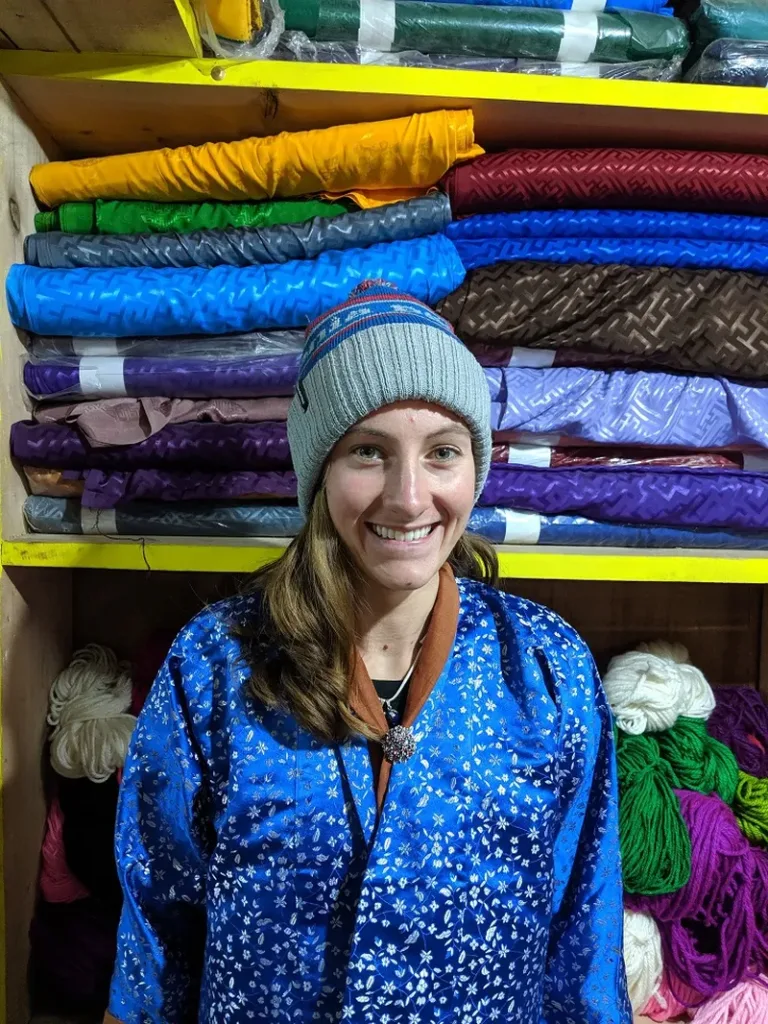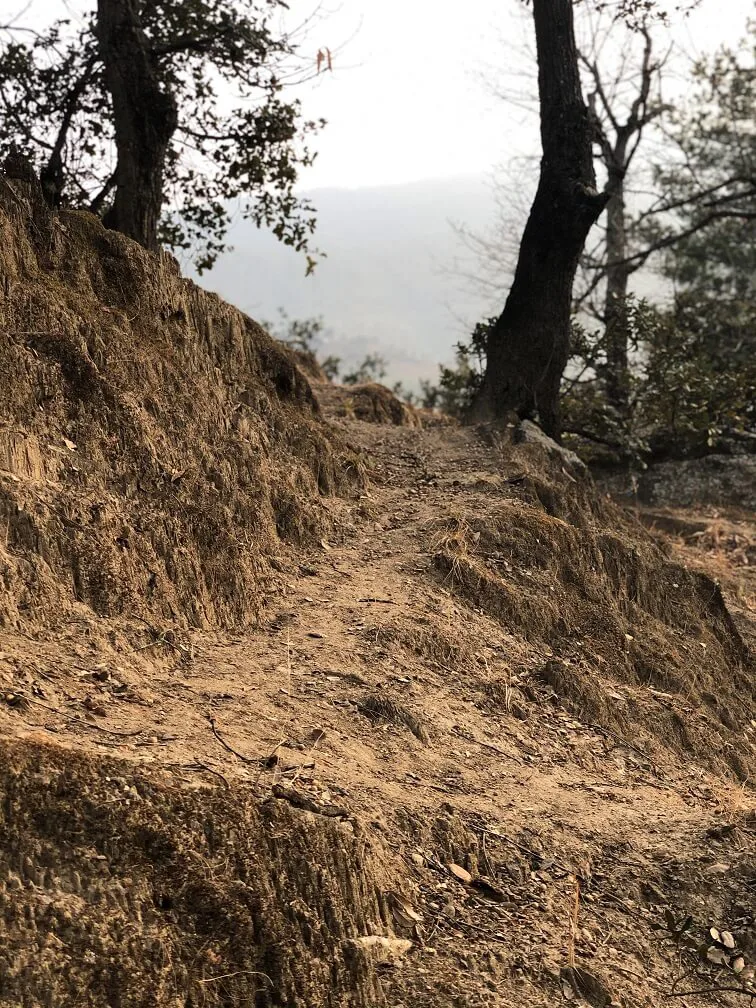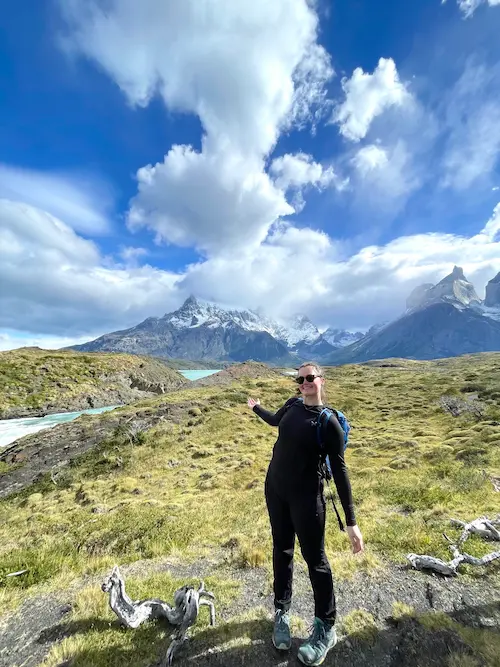
By: Ani Williams
Savoring the Moment in Bhutan
Our breath puffed out mist in front of us as we ran toward the jagged Himalayan peaks jutting into the sky. They were so big it looked like we could reach out and touch them, despite the fact that they were still miles away. The previous night had been a full moon and as we ran, we watched it sink below the jagged mountains. This was just another morning in Paro, Bhutan, our home for the semester.
Bhutan is a tiny country nestled between India and China, but despite its small size it has a big personality. It is located in the midst of the Himalayan biodiversity hotspot and within three weeks of beginning our semester we had seen wild monkeys, takins (Bhutan’s national animal), wild yaks, many different species of colorful birds, and more plants than we could possibly hope to learn by the end of the semester. Bhutan is also home to the highest unclimbed peak in the world and mountains define its environment. Our home in Paro is surrounded by trails that zig zag up thousands of feet in elevation to reach monasteries perched precariously on cliff sides. Bhutan has one of the largest elevation ranges of any country (520 – 23,000ft) and within the span of five hours our bus was able to carefully traverse the treacherous dirt roads cut into mountainsides to carry us from 7,500 feet to around 800 feet in elevation, plunging us from a dry, cool valley into a tropical world filled with banana trees and brightly-colored flowers. Bhutan really is a land of extremes presenting infinite opportunities to learn and explore.

Local hiking trails
While study abroad is a chance to take classes in a different place from your home institution, I think that a great deal of the learning, at least in Bhutan, happens outside of the classroom. From navigating cultural and language barriers, to learning how to form a close-knit community with peers and professors, to trying new foods (including lots of spicy ema datshi!), to reevaluating how you use resources and changing your habits to match the local availability of different resources, just living in Bhutan is an adventure in itself.
We’ve been in Bhutan for less than a month, and already my peers and I have had the opportunity to spend five days in Thimphu, Bhutan’s capital, and to stick our hands across the border into India in Phuentsholing, a transboundary city in southwestern Bhutan. We’ve walked around in awe of the vibrant colors of unknown fruits at local vegetable markets, and we’ve politely declined offers to buy insect powder from large burlap sacks at these same markets. We’re beginning to develop a system for classifying the spiciness of chilies served in practically every Bhutanese dish and we’ve gotten into the habit of turning on the water heater in anticipation of showers, adjusting cleanliness expectations when pipes freeze, and doing homework with headlamps when the power goes out. Most of us have explored the area in small groups, taking advantage of the opportunity to visit a local monastery and making the trek up to the Chele La pass meditation hut, situated around 13,500 feet above sea level. We’re all slowly learning how to dress ourselves in the local kiras and ghos and have become experts in layering, allowing us to be comfortable both during frosty mornings but also ready to embrace the hot, dry, Himalayan sun by lunch time. Every day presents new adventures, new challenges, and new opportunities for learning and I often find myself in awe of the fact that I get to live here for the next few months.

Chele La Pass
While we only really get to spend a small fraction of our lives in Bhutan, for the duration of the semester Bhutan is our world. Likewise, we also are becoming a part of the SFS community, a community that spans 10 countries across the world and has more than 35 years’ worth of alumni. A friend of mine completed SFS Panama in Fall of 2018 and I’ve been able to witness how formative her experience was in shaping future career goals. And currently, my best friend is studying with SFS in Chile. Despite vast geographic distances and cultural differences between Chile and Bhutan, we get to share in the experience of a semester with SFS. I am also learning so much from my peers in Bhutan, each of whom brings a different background and perspective to our field work and life in the Himalaya. And, while at the end of the semester I’ll have to leave Bhutan, I’m grateful to know that the SFS community will extend beyond my time here.

Local Dzong
I’ve found myself wondering a lot about what specific moments will stick with me the most after I leave Bhutan. In the one month that we’ve been here I’ve seen and done too much to possibly hope to remember everything. I think in general I’ll remember appreciating the little things like watching sunlight slowly retreat up the mountain slopes each afternoon, noticing the intricate, colorful Buddhist symbolism painted on most buildings, or savoring a cup of tea on the terrace each morning listening to the birds wake up around me.
Some days in Bhutan stretch on forever, packed with new experiences, challenges, learning, and growth, but then morning comes again, and I get to run up toward the jagged Himalayan peaks, searching for the moon against the sky. And for now, I’m just trying to savor these little moments.
Related Posts


